Experts Talk About the Risks and Work-Arounds of Training Your Sporting Dog in Summer Heat
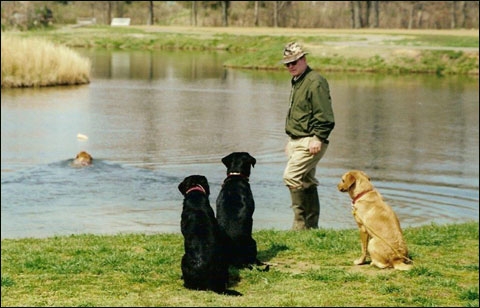
Spring weather makes every dog trainer and handler smile. Low temperatures, occasional rain, and breezy winds bring dogs alive. Conditioning is regular, scenting conditions are good, and it’s a time when regular progress is made. If only we could roll right into hunting season…
But summer is in between, and the hot, dry temperatures and bright, cloudless skies threaten to undo all of our hard work. Keeping your pup safe in the heat is the first order of the day, and continuing to build on their foundation is the key to a successful fall. Here’s how some pros handle the heat.
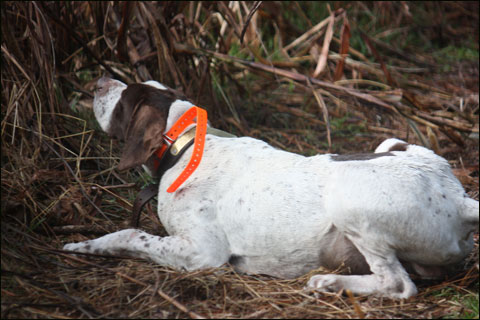 English Pointers are driven to find birds. When they’re laying down on point, the odds are good they are overheated.
English Pointers are driven to find birds. When they’re laying down on point, the odds are good they are overheated.
Mark Fulmer, owner of Sarahsetters Kennels in Aiken, South Carolina and a Eukanuba Pro Trainer, is used to working in the heat. “In the South, heat is a normal part of everyday life,” he said. “But since I have dogs to train, I have to find ways to work with high temperatures and humidity. Use the 150 Rule before beginning any training session. Add the air temperature and humidity percentage together. If the sum exceeds 150 you have to be careful. Dehydration and heat stroke can be an issue.
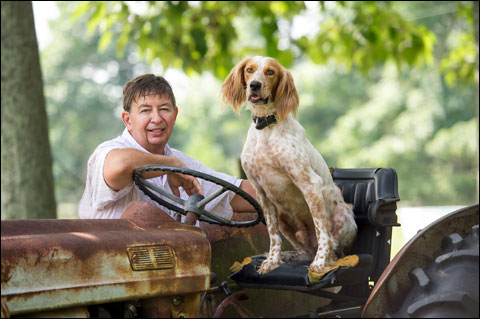 If pro-trainer Mark Fulmer is sweating then it’s hot and humid. That’s the time to be careful when working with dogs.
If pro-trainer Mark Fulmer is sweating then it’s hot and humid. That’s the time to be careful when working with dogs.“In cooler weather I focus on handle and pattern. Conditioning, roading, field obedience and exposing dogs to birds is the norm. When it’s hot out I’ll start sessions after the dew lifts which is usually around 9-10:00 AM. That’s when the humidity drops, and the wind picks up. I’ll also work later after the peak heat. Each dog is worked for a shorter period of time, and there is much less if any free running. Summer is a good time to focus on bird work. Put out three to four birds in a smaller area and work the dog in a 15-20 minute interval. That way you’ll maximize the training effort while minimizing its impact on the dogs.
“Summer is a good time for breaking and finishing dogs. Check cords keep dogs from running hard and overheating while place board work focuses on developing their staunchness. Summer is a perfect time to work on retrieves. I like all dogs, even pointers and setters, to make water retrieves, so throwing a bumper in a pond is perfect. The extra conditioning that comes from swimming is a big plus.”
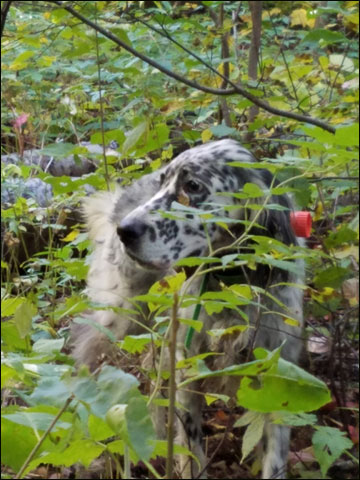 In the summer work dogs for shorter periods of time. Shady areas help.
In the summer work dogs for shorter periods of time. Shady areas help.
Robert Milner, the owner of Duckhill Kennels in Somerville, Tennessee also trains in a hot, humid environment. “Most of the hard work is done in the spring, so summer is a time to take it easy,” he said. “A dog’s core body temperature needs to be kept low, and that’s difficult to do. Paul Bunker, a former trainer with the Department of Defense, conducted phenomenal research that showed well-conditioned dogs of the proper weight withstand the heat better than dogs that are out of shape and overweight. Get your dog fit in the spring and he’ll do better in the summer.
 Robert Milner and Dolly work on self-control when the temperatures get warm.
Robert Milner and Dolly work on self-control when the temperatures get warm.“Summer is a great time to work on a dog’s self-control. Plant live birds in a field, toss bumpers in the middle of those live birds, and have dogs retrieve the bumper. That technique sets up fall retrieves when you want a dog to bypass the dead ducks that fell in the decoy spread and swim to pick up the cripples that are at a distance. Other drills that develop self-control and steadiness require minimal exertion. Commands like sit, stay, come are ideal summer activities. Throwing bumpers in a pond for water retrieves is a given, and slightly longer distances of between 100 and 200 yards are fine. Labrador retrievers love to eat, so be sure to adjust their feeding so they don’t put on extra weight.”
Russ Kelley, the Science Lead and Service and Working Dog Research Manager at Eukanuba’s Pet Health and Nutrition Center, says “dehydration is one of the greatest health challenges for dogs involved in performance activities. A dog’s body is comprised of about 70% water. Maintaining that level ensures health, especially when working dogs in warm or humid temperatures. As performance canines are often hyper-focused on their task, do not depend on them to tell you they are thirsty. Proactively take regular water breaks so as to maintain proper hydration levels.
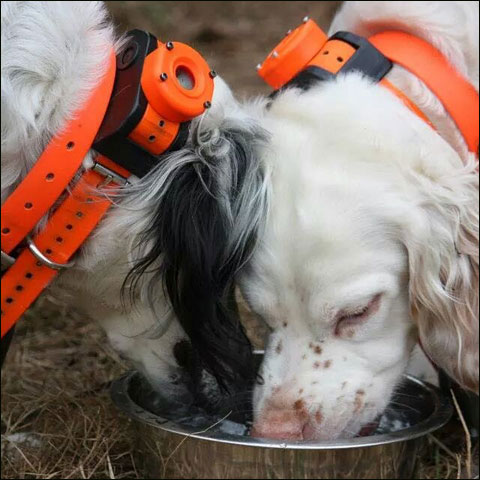 Getting dogs plenty of water helps keep dehydration and heat stroke away.
Getting dogs plenty of water helps keep dehydration and heat stroke away.“Dehydrated dogs do provide clues that help handlers identify their condition. The table below indicates the three stages of dehydration. If you have any doubt about your dog’s health be sure to consult with your veterinarian. Dehydration is something all handlers want to avoid, so be sure to shorten sessions, reduce intensity, work during the cooler parts of the day, and give your dog plenty of water. A 44-pound dog will consume anywhere between .5 and 1.5 gallons per day. Heavier dogs drink more.”
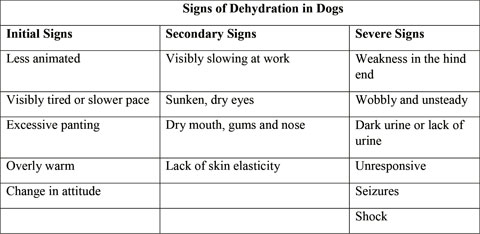
With summer here, proper preparation prevents poor performance. Work with the summer heat, not against it, and you’ll build on a strong spring foundation. Come fall, you and your string will be ready to roll.
Tom Keer is an award-winning writer and regular contributor to over a dozen magazines and blogs. His favorite time of year is in October and November where you can find him in woodcock and grouse coverts or quail fields with his wife, two kids, and three English setters. Visit him at www.tomkeer.com or at www.thekeergroup.com.
Useful resources:
The web site for Duckhill Kennels
The Sarahsetter Kennels web site

Tom Keer is an award-winning writer and regular contributor to over a dozen magazines and blogs. His favorite time of year is in October and November where you can find him in woodcock and grouse coverts or quail fields with his wife, two kids, and three English setters. Visit him at www.tomkeer.com or at www.thekeergroup.com.


Comments